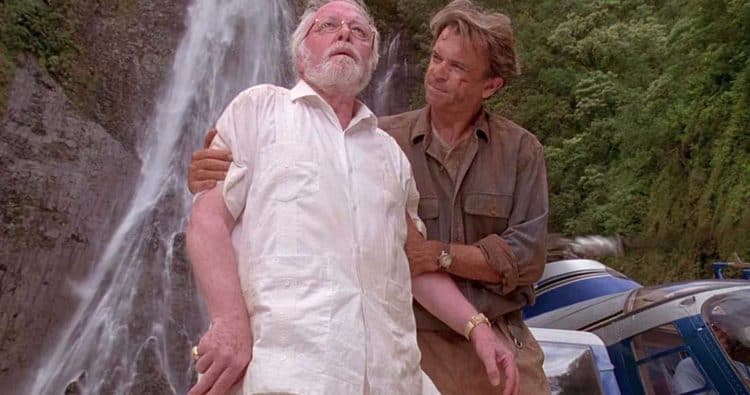
Jurassic Park did more for dinosaurs in the movies than any other movie ever has since it made people think that John Hammond’s dream could possibly come true and that perhaps one day the creatures would be a part of the world they’d left behind so long ago. The problem with that is the fact that Jurassic World continued the legacy after two less than stellar Jurassic Park sequels and people are still thinking to this day that the imagination can be brought to life in a very real way no matter that much of what we’ve seen has been debunked and revealed to be little more than a pipe dream that won’t come true no matter how much belief and research are put into it. And if it were possible, then it would take a certifiably insane individual to think that it was a good idea, even for entertainment.
With that in mind, here are a few things that the movies get wrong about dinosaurs.
5. The T.Rex relied solely on sight, and couldn’t ‘see’ you if you didn’t move. With nostrils that big it’s easy to think they had a good sense of smell.
Even if that enormous bugger couldn’t see you, then it’s likely that it’s sense of smell, which is touched upon in The Lost World, would enable the creature to pick up the scent of someone that’s right in front of them. Plus, the creature’s hearing was just fine as one could imagine, and since ‘Lex screamed right before Alan covered her mouth it’s easy to think that the two of them should have been dino chow in the first movie considering their proximity to the T.Rex. Even if they had gotten away, one has to remember that the beast managed to get out of the enclosure, so why wouldn’t it just come in after them?
4. Dinosaurs were all scales and leathery hide. According to paleontologists, there were a lot more feathers involved in the genetics of dinosaurs.
Apparently, this wasn’t found out until around the 90s, but it’s enough to think that the dinosaurs that we used to think of as scaled horrors were actually a lot more colorful and had plenty of plumage about their bodies for various reasons. It does make them look a little silly in some ways, but if the biology fits then it’s hard to argue with since those creatures that have feathers do tend to show as much in various ways. A lot of this feels like the best guess, but when a person spends their life looking at bones and trying to divine just what a creature looked like, it’s usually best to go with those that have put in the work and study.
3. Pterosaurs and Pteranadons could easily pick up humans. Nope, not even close, the weight of a human would be too much.
Even the biggest among them would have had a seriously hard time, and if you watch in Jurassic World, several of these creatures are having a heck of a time getting anyone off the ground without some serious momentum. The problem here is that the added weight of a human being would become dead weight or worse, thrashing, scared, panicked weight that would exert a greater pull on the creature and make the flight even less possible since their wings simply weren’t big enough and despite their musculature they weren’t strong enough to stay aloft with that much weight in their talons. Hunting for fish or small animals is a far cry from a human being.
2. Dinosaur DNA is perfectly viable. 65 million years is a long, LONG time, even for DNA.
Even refrigerated, which would have been possible if an ice age had hit right at the exact time it was needed, wouldn’t have been enough to keep the dino DNA viable for that long. At some point DNA does begin to break down, and even if it takes an extraordinarily long time, the degradation that it would have undergone over the years is likely to have made it even less possible to extract for future use. The science behind it was interesting to think about, but then one might have to think about digging for years upon years to find a wealth of mosquitoes from the right time period and hope that they’d all been snacking on dinosaur blood before they were trapped in amber.
1. The T.Rex could pace a car doing 40 mph for a while. Not really, they could hit about 15 mph, tops.
It’s terrifying to think of something that big being able to move that fast, but in the movie, with the level of bio-engineering they’re capable of, it still feels unlikely since the bigger something is, the less likely it’s going to move that quickly. Plus, when one thinks about it, the prey that a T.Rex would go after were usually larger, slower animals and wouldn’t be moving away that quickly, partially because of their greater mass and partially because they had other ways of defending against an attack.
It’s nice science fantasy, but the science really doesn’t support the idea of dinosaurs as they’re seen in the movies.
 Follow Us
Follow Us





